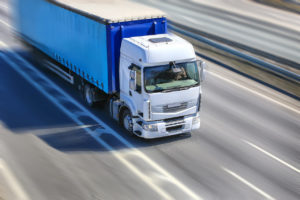What is an electronic bill of lading?
The electronic waybill is a digital version of the traditional waybill. The purpose of the document does not differ one iota – currently both variants can be used interchangeably. However, if we were to say that, to this day, the majority of businesses in the European Union issue traditional waybills, that would be quite an understatement.
According to data made available by the European Commission in the Proposal for a Regulation of the European Parliament and of the Council on electronic information on freight transport, up to 99% of cross-border transport operations within the EU still use paper documents at some stage of the operation. However, it is worth noting that these figures are from 2018, and electronic waybills were introduced even later (for example, in Poland in 2019) – but at this point the EC has not released more recent estimates.
The E-CMR, as this is also the code used to refer to the electronic consignment note, appeared in business by virtue of the Additional Protocol to the CMR Convention. The creation of E-CMR was intended to simplify and streamline the documentation system. Whether these assumptions will come true depends largely on the entrepreneurs themselves.
The future of electronic waybills
It can be assumed that electronic waybills will become the prevailing norm in the future as a replacement for traditional paper documentation. This is confirmed by a decision of the European Parliament’s Committee on Transport and Tourism – according to its wording, EU member states should implement eFTI (Electronic Freight Transport Information Regulation) solutions.
Important!
The CMR Convention, or the Convention on the Contract for the International Carriage of Goods by Road, was established in Geneva in 1956. Poland ratified this international agreement in 1962. The CMR Convention is a piece of legislation governing the carriage of goods between signatory states, including in the context of transport documentation, carrier liability or complaints, claims and claims arising from the contract of carriage.
Why use an electronic waybill?
Although in theory the E-CMR is simply a digital version of the waybill, it offers more than its traditional counterpart. Key innovations include features such as real-time route tracking and the ability to estimate a shipment’s time of arrival (ETA) at its destination.
The introduction of electronic shipping documents in companies is associated with clear savings – according to official estimates, the price of issuing, filing and processing paper documentation is three times higher than with E-CMR. This estimate is primarily due to the time it takes to process a waybill – with an electronic waybill, this time is reduced by several times.
Paper waybills – a handful of statistics
Another aspect to consider when deciding whether to introduce an electronic waybill in a company is the issue of the quality of the information contained in the shipping documents – according to the Electronic Consignment Note E-CMR study, the results of which were made available by the Polish Institute of Road Transport, the data are striking:
- As many as 60% of logisticians and 80% of freight forwarders fill out waybills manually,.
- Almost half of the drivers are waiting for 15 to 30 minutes for the bill of lading to be issued!
- Only ¼ of the waybills are legible,
- 22% of the waybills contain up-to-date data,
- Only 15% of waybills are error-free,
- Only one in ten waybills contains complete data!
Electronic waybill eliminates most of these problems – issued on a computer, the document will always be perfectly legible, and the use of appropriate software guarantees no possibility of overlooking important data (a letter without specific information will not be able to be issued).
How to use the E-CMR waybill?
An electronic letter shall be drawn up using electronic communications. Entities interested in executing a transportation contract – most often carriers and shippers – are authorized to issue E-CMRs.
It is also worth mentioning the need to authenticate the electronic bill of lading – this must be done by the parties to the transportation contract via a qualified signature.
Besides, the way E-CMR is used is no different from the traditional one – you still have to issue the document in several copies (for the shipper, for the carrier and for the consignee of the shipment) with the difference that with E-CMR it is done much faster. Similarly, the electronic waybill is used for roadside inspections in the same way as the paper waybill.
Electronic waybills – summary
There is no doubt that the actual “transition” of the TSL industry in its entirety to E-CMR will be no small convenience and will entail a number of benefits, including: saving time, money and the possibility of eliminating errors (or at least significantly reducing their number).
And while the situation does not look optimistic on the threshold of 2023, the E-CMR waybill is slowly gaining more territory, and it is to be expected that the potential that lies in the use of electronic waybills will eventually be recognized – not least because we are required to do so by the provisions of the Electronic Freight Transport Information Regulation, the aforementioned eFTI.


